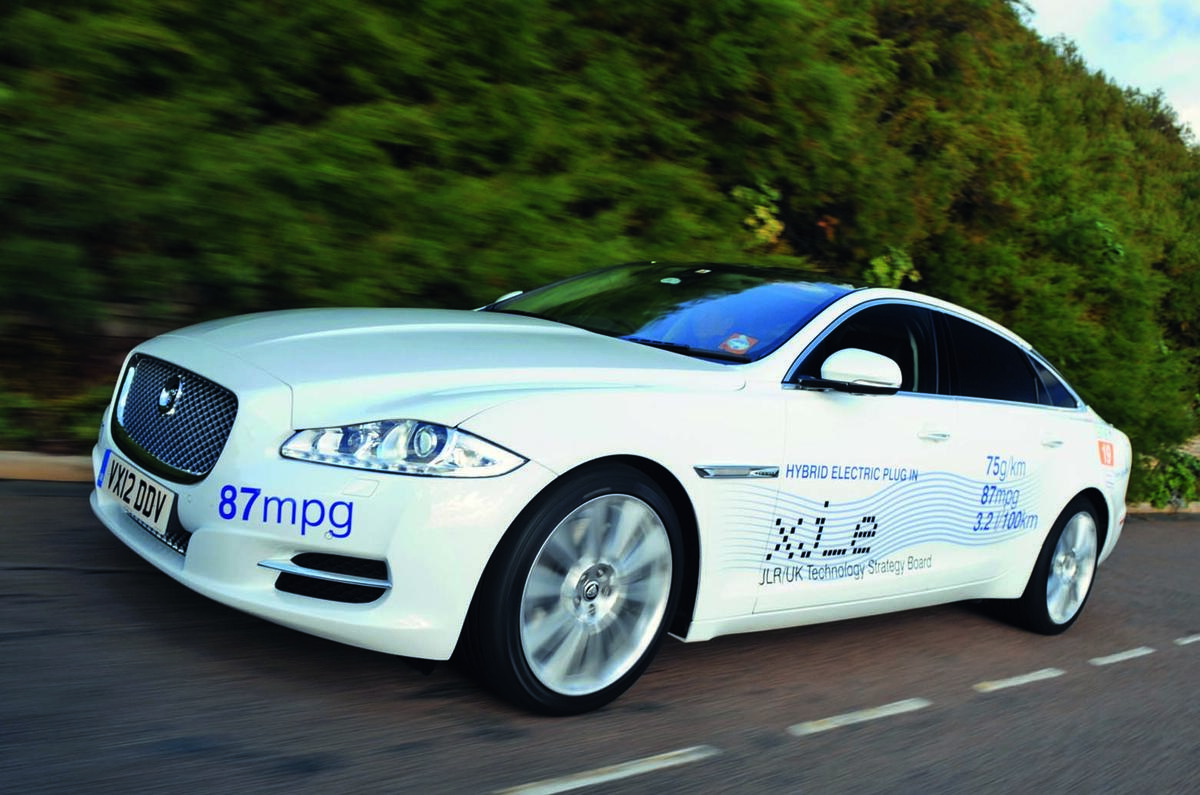If an all-EV Jaguar line-up sounds unlikely, then step back and take a look at the brand’s recent product launches, which show it has been surprisingly committed to battery propulsion.
Back in 2009, Jaguar built the XJ-based Limo Green, which was driven by an electric motor and had a small battery backed up by a Lotus-designed 1.2-litre engine that acted as a generator when the battery was exhausted.
More recently, the first Jaguar I-Type Formula E electric race car was unveiled in 2016, with the team unusually run out of its car factory. A third-generation version has just been revealed ahead of the 2018/19 season, and the company has also committed to a one-make eTrophy I-Pace support series.
Even earlier, there was the stillborn C-X75 hybrid two-seat sports car, which was originally conceived with tiny jet turbine power generators. Five working prototypes were built with a more conventional battery hybrid setup, with motors that would go on to influence the I-Pace.
The brand has also spent serious time and money designing an electric drivetrain for retrofitting into a classic E-Type. The E-Type Zero is on sale now via the company's Classic division.
Finally, the Jaguar I-Pace electric crossover beat the German premium brands to the market by some distance. Not only has the car been rapturously received but it has finally broken the historic — and arguably dated — Jaguar style mould, inside and out.
The I-Pace points to a sustainable future for this much-loved brand that has never quite hit the big time.
Read more
JLR to shut Solihull plant for two weeks as sales slide
2018 Jaguar I-Pace: 395bhp EV revealed




Join the debate
Add your comment
Jags..
Modern Jags especially the XF and XE have never been original and needed other car makers to start the trend.
The first generation XF was based on the Ford DEW98 platform, whilst the styling of it was on the C-XF concept from 2007. But if you noticed the high wastelline rear 3/4 styling with its straight side edge and integrated exhausts into th rear bumoers to my mind has been heavily influenced by the Lexus LF-Sh concept from 2005 (released as 4th Generation LS in 2006). SInce then th XF has just been touched up witj little changes in the past 10 years. maybe frot lights mow more like the X-XF.
I think the high sloping waist line was started by the BMW 5 series designed by Bangle, but the inregrated exhaust into rear bumpers definetly Lexus..
As for the XE the styling of it is BMW/Lexus/Aud with Jaguar front grille and lights only/
.
Soldi - you are upsetting the JLR fanboys with the truth. They cannot accept the shite unfinished article products that roll off their production lines. They are hardly know for electrical reliablity in their cars, nor fit and finish. They are crap, but you cannot tell a JLR fan boy that they get very upset and emotional.
An Jonboy - I am fairly sure they would sell to a moron, since their sales record is so poor recently (again no excuses, just rubbish products)
We had a RR Autobiography which was nothing but a pain in the ass (from new), and further to that my experience in a Evoque and XE with their unrefined, laggy engines, shit panel gaps, rubbish infotainment and clicky clack plastics - well. Utter tripe.
Not selling?
Just which orifice are you talking out of? Try (as I am) to get an i-Pace for delivery before next tax year and see how far you get? Not only have Jaguar beaten the german makers to the market, they've done so with a design that makes all of their visible offerings look old-fashioned and staid, in the same way that the very earliest cars looked like Hackney Carriages without the horses. Their big issue however is a control, communications and infotainment architecture that is out of the dark ages, is unresponsive and poorly integrated - this is where they lose out to Tesla, big time.
1268 units sold globally - hardly stellar
Jag has sold 1268 units up until the end of September.
Hardly enough to give anyone sleepless nights - except Jaguar themselves.
In great shape......
Yes, Jaguar have produced a more appealing looking Car than Tesla, it looks like it’s got a soul, the Tesla is a “does what it says on the Tin Car” full of gadgets that will soon gather dust, and, where’s the Mk2 Tesla?, no, Jagusr have got a good product no question, no if they could only give their Cars a real World range that most would be happy with (400, 500miles) and super quick charging, and the Government could get the infrastructure in place too, we’d all be happier Bunnies....!